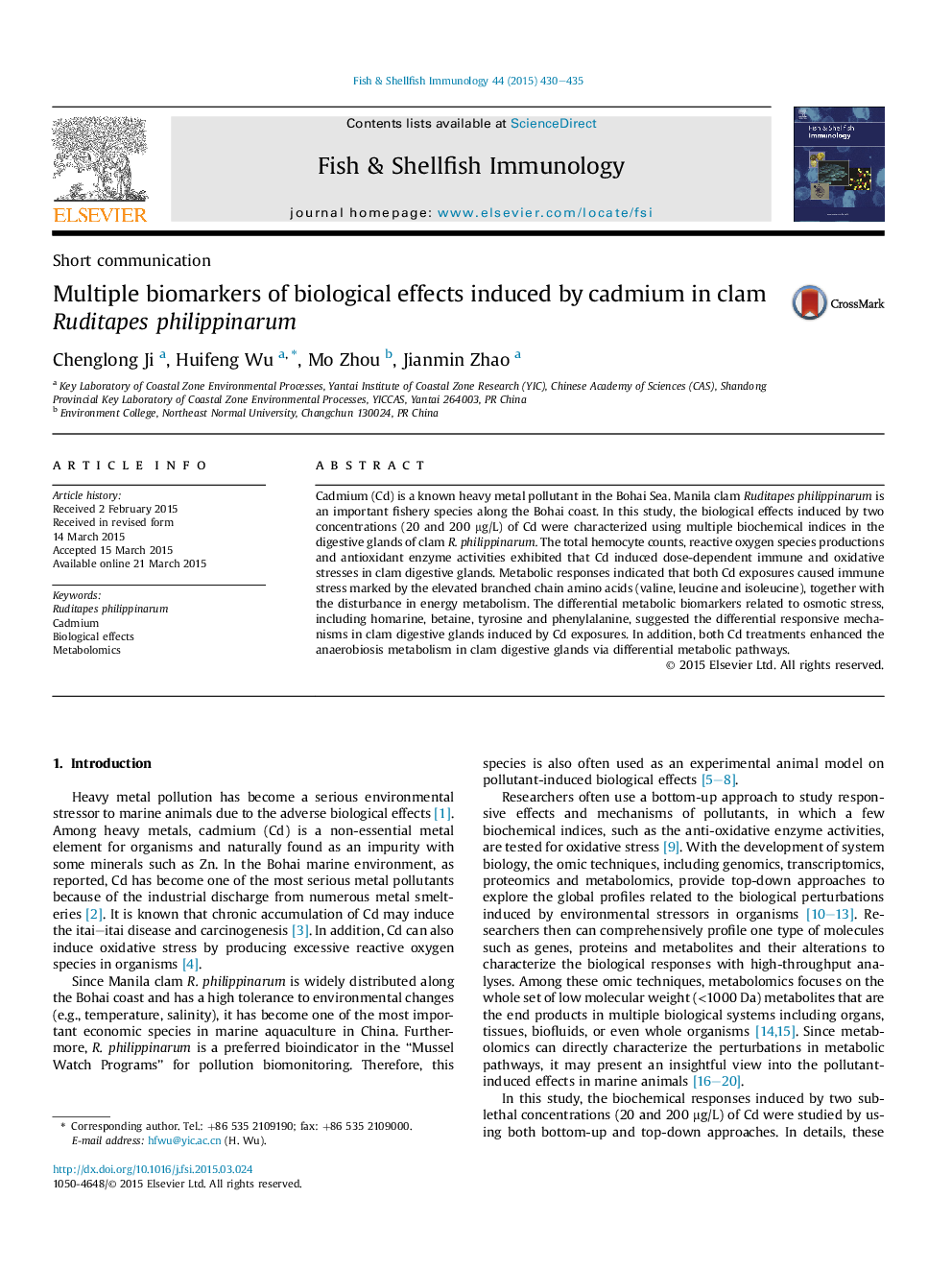| Article ID | Journal | Published Year | Pages | File Type |
|---|---|---|---|---|
| 2431248 | Fish & Shellfish Immunology | 2015 | 6 Pages |
•Cd induced dose-dependent immune and oxidative stresses in clams.•The two Cd exposures induced osmotic stress via differential responsive mechanisms.•Cd exposures enhanced anaerobiosis metabolism via differential metabolic pathways.
Cadmium (Cd) is a known heavy metal pollutant in the Bohai Sea. Manila clam Ruditapes philippinarum is an important fishery species along the Bohai coast. In this study, the biological effects induced by two concentrations (20 and 200 μg/L) of Cd were characterized using multiple biochemical indices in the digestive glands of clam R. philippinarum. The total hemocyte counts, reactive oxygen species productions and antioxidant enzyme activities exhibited that Cd induced dose-dependent immune and oxidative stresses in clam digestive glands. Metabolic responses indicated that both Cd exposures caused immune stress marked by the elevated branched chain amino acids (valine, leucine and isoleucine), together with the disturbance in energy metabolism. The differential metabolic biomarkers related to osmotic stress, including homarine, betaine, tyrosine and phenylalanine, suggested the differential responsive mechanisms in clam digestive glands induced by Cd exposures. In addition, both Cd treatments enhanced the anaerobiosis metabolism in clam digestive glands via differential metabolic pathways.
